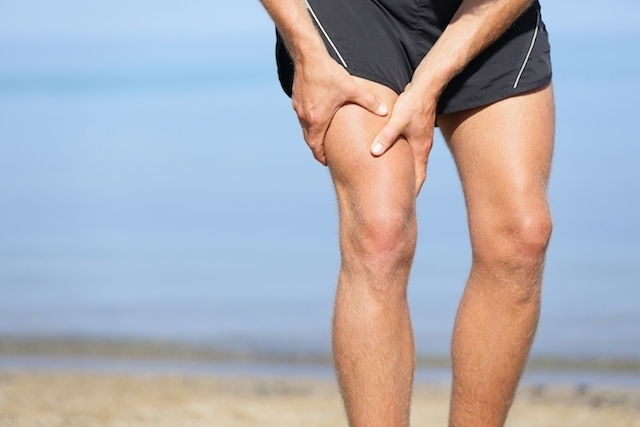A muscle strain is an injury that occurs when the fibers of a muscle overstretch. This can tear the muscle fibers, and commonly occurs following excessive physical exertion.
Muscle strains are characterized by intense pain at the site of the injury, as well as reduced strength and flexibility in the affected area.
To relieve pain and ensure a faster recovery, you are advised to rest the injured muscle and apply ice. You can also take anti-inflammatory medications and participate in physiotherapy sessions to restore function.

Common symptoms
The main symptoms of muscle strain are:
- Intense pain at the site of the strain
- Loss of muscle strength
- Decreased range of movement
- Decreased flexibility
Muscle strains most frequently occur in the thigh muscles and calves, but they can also happen in the back and arms.
It is important to see a doctor or physiotherapist for assessment if you suspect a muscle strain to rule out another, more severe injury, and to start treatment as needed.
Also recommended: Muscle Spasms: 6 Common Causes & When They’re Serious tuasaude.com/en/muscle-spasmsDifference between muscle strain and sprain
The main difference between a muscle strain and sprain is the location where the injury occurs:
- Muscle strain: the injury occurs in the red muscle fibers, which are located in the middle of the muscle.
- Muscle sprain: the injury occurs in the tendon or involves the muscle-tendon junction, which is exactly the place where there is a connection between the tendon and the muscle, close to the joint.
Despite having the same cause, symptoms, classification method and treatment, they should not be used as synonyms, as the locations of injuries are different.
Main causes
The main cause of a muscle strain is excessive effort to perform a muscle contraction. This can happen during a run, when playing sports or with heavy lifting with inappropriate body mechanics. It can also be caused by sudden movements, prolonged exertion, muscle fatigue or inappropriate use of exercise equipment.
Degrees of muscle strain or sprain
According to the severity of the injury, the strain can be classified into:
- Grade 1: there is over-stretching of the muscle fibers, but there is no rupture. Pain is typically milder and improves within a week.
- Grade 2: There is a small tear in the muscle or tendon, which causes more severe pain. Recovery takes about 8 to 10 weeks.
- Grade 3: This injury is characterized by complete rupture of the muscle or tendon, causing symptoms such as intense pain, swelling and heat in the injured region. The recovery varies between 6 months to 1 year and may require surgical repair.
To assess the degree of muscle strain, the doctor may assess the symptoms and order further imaging tests, like MRI or ultrasound, to visualize the injury.
Treatment options
The treatment of a muscle strain should be recommended by the doctor depending on the patient's symptoms, test results and the severity of the injury. Anti-inflammatory medication is usually prescribed to relieve the symptoms, while physiotherapy can promote muscle functioning and recovery.
It is also important to rest and apply cold compresses 3 to 4 times a day.






























